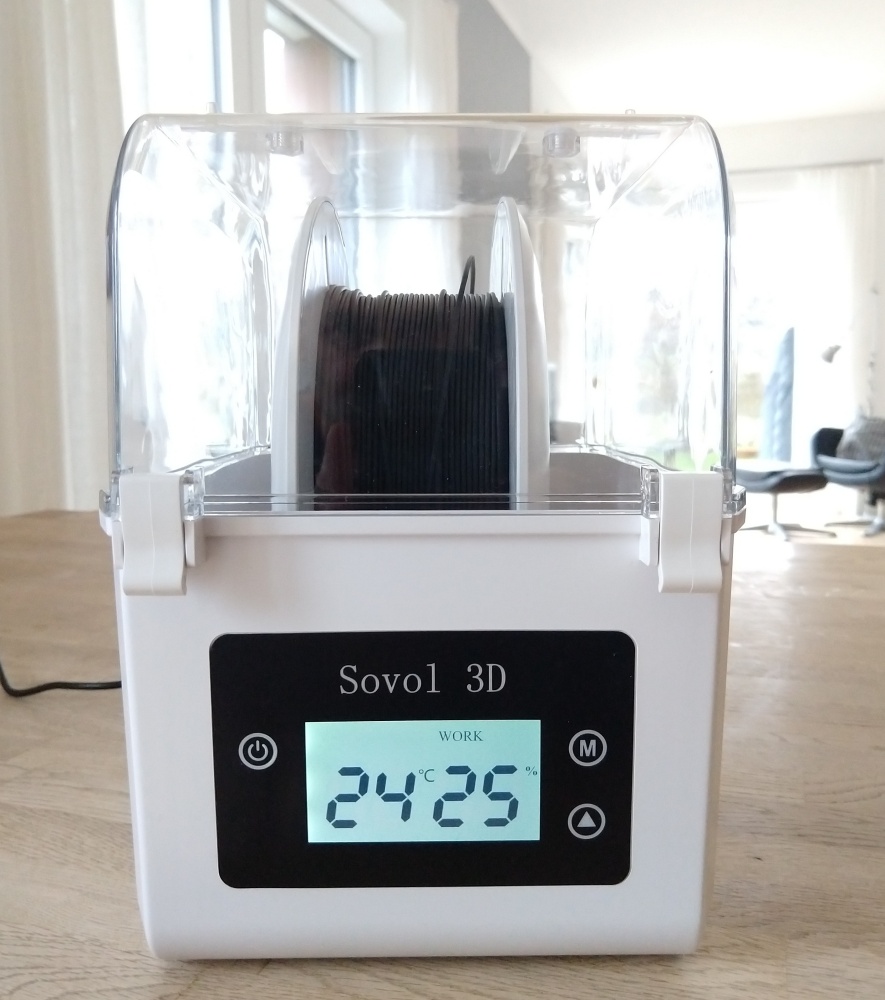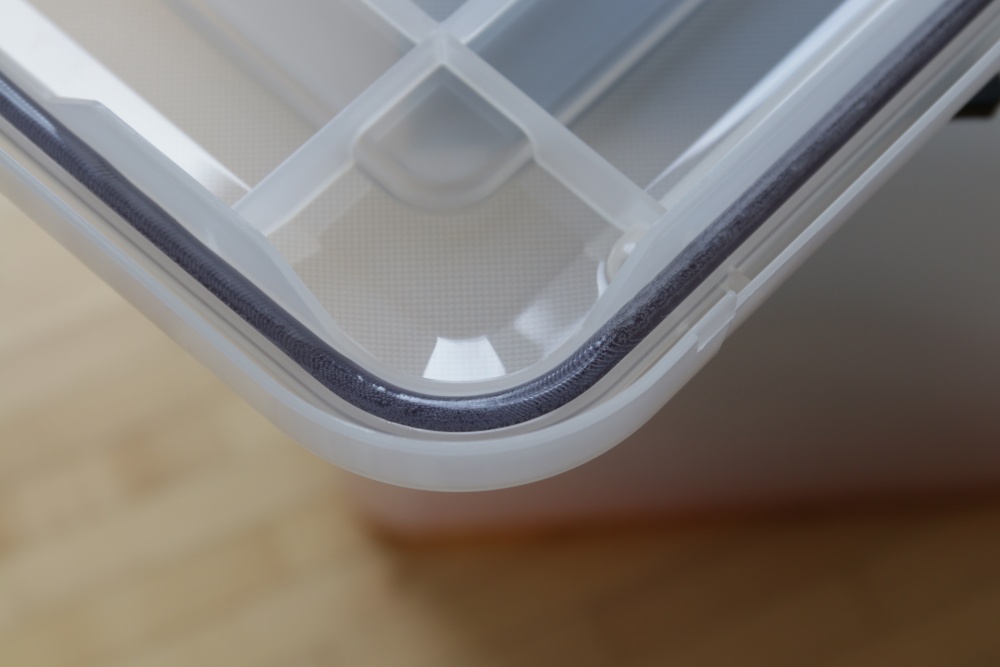The correct storage of the filament is very important and is neglected by many. Many filaments are hygroscopic. That means they take in water. To protect against moisture, the filament is therefore vacuum-sealed together with a drying agent immediately after production.
The hygroscopic properties are different depending on the type of plastic. The properties change due to the moisture in the filament.
The following changes can occur:
- especially mechanical properties get worse, the material becomes more brittle, eventually more flexible
- stringing occurs a lot (fine hair when moving the nozzle)
- temperature and chemical resistance decrease
- layer adhesion gets worst, the entirety of the printed object is violated
- oozing occurs (accumulation of material on the side of the nozzle, which may lead to release and contamination of object), the nozzle can be clogged because of the accumulation of degraded material

With the Sovol Drybox, two narrow spools of filament or one width like Fiberlogy's can be dried. With narrow spools of filament, you can also print directly from the dry box.
Many misprints arise from incorrect storage or neglect of drying. Beginners who get a string usually try to eliminate the failer by changing parameters in the slicer, which is often the wrong way. Simply dry the filament or store it properly and the problems will not arise.
Overview hydroscop:
| Material | Properties | Dry time | Dry temperature |
| PVA | The water-soluble support material is extremely hygroscopic. The material can absorb water in just a few hours. Therefore only buy the amount you need or print out of a dry box. | 10-20h | 50°C |
| BVOH | The water-soluble support material is extremely hygroscopic. The material can absorb water in just a few hours. Therefore only buy the amount you need or print out of a dry box. | 4h | 50°C |
| Nylon / Polyamid | Polyamide can absorb water within a few times of wearing. | 3-8h | 60-90°C |
| PC | 4-8h | 70°C | |
| CPE | 5h | 75°C | |
| ABS | 2-4h | 80°C | |
| ABS/PC | 4h | 80°C | |
| ASA | 2-4h | 80°C | |
| PLA | PLA should also be stored in a dry place after printing, as it also absorbs moisture after several days. | 2-4h | 50°C |
| Impact PLA | 4h | 50°C | |
| PLA Mineral | 2-4h | 50°C | |
| PETG | PETG should also be stored in a dry place after printing, as it also absorbs moisture after several days. | 4h | 65°C |
| TPE | 2h | 80°C | |
| TPU | 3h | 80-100°C | |
| NonOilen | 2h | 70°C | |
| FiberSilk | 2-4h | 50°C | |
| Fiberwood | 2-4h | 50°C | |
| PP | No water absorption that affects print quality | - | - |
| HIPS | No water absorption that affects print quality | - | - |
Correct filament storage:
Store the filament in a very dry place, at room temperature and out of direct sunlight.
An airtight, lockable PP plastic box with desiccant is recommended for storage. The box should be made of PP, as the material allows very little moisture to pass through. A color indicator for the degree of moisture is helpful for the desiccant.


The following products are recommended for storage:
-
IRIS OHYAMA Water Proof Box + Silica Gel Orange Desiccant Indicator Green Regenerable Dehumidifier
- Vacuum set including pump
